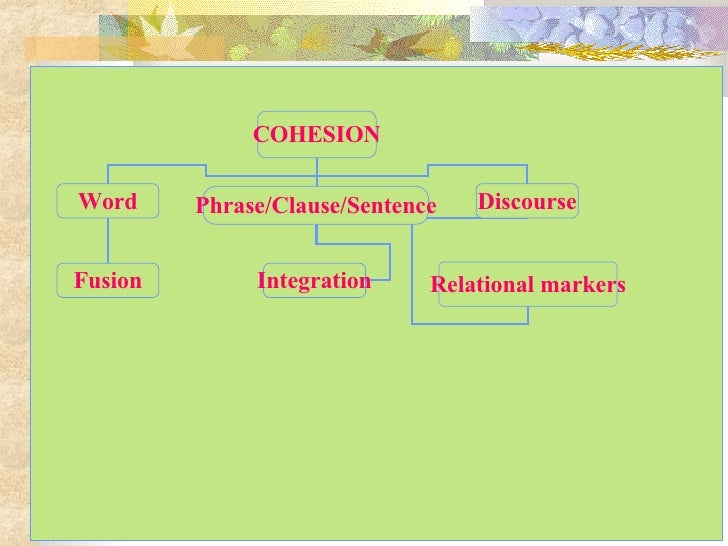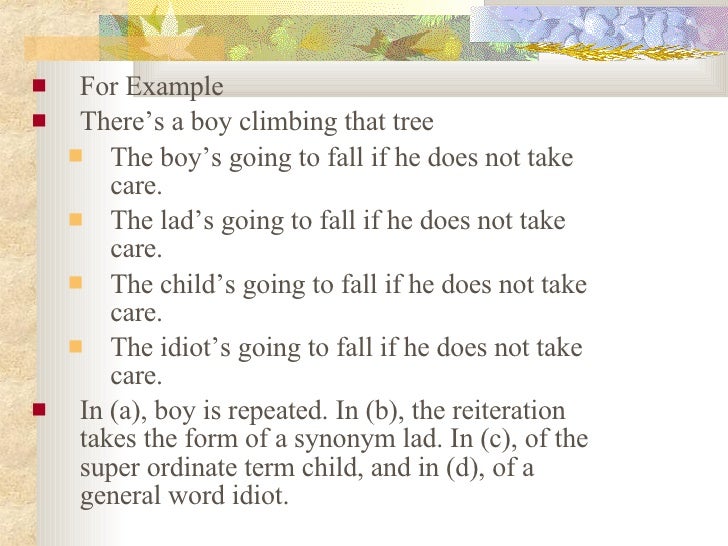

The study specifically purported to investigate how solid the correlation is between employing conjunctions and producing high quality written texts. This study was conducted to scrutinize the use of conjunctions as cohesive devices in Emirati students' argumentative essays. The findings also contribute to the increasing body of knowledge in studies related to the writing and communication of deaf learners.

The findings of this study provide a theory-governed description of cohesive ties used by the hearing-impaired learners in Kenya. Reference had the highest frequency of occurrence and ellipsis the least. In the final analysis, the paper found out that all the cohesive devices posited by Halliday and Hasan were present, but at varying frequency. To be able to interrogate the cohesion devices, the article located itself within the lens of Halliday and Hasan's theory of Cohesion to identify, describe and categorise cohesive devices in the texts. It investigated ways by which hearing-impaired learners have been able to achieve cohesion in their written texts. To try to aid in providing solutions for amicable communication in the written works of these learners with hearing problems, this article investigated the nature of cohesion in the hearing-impaired learners' English written texts. Studies conducted on the subject reveal that hearing-impaired learners face several challenges in their written English. This paper set out to interrogate the types of grammatical cohesive devices that learners with hearing-impaired use in their writing. The study recommends a research initiative based on an analytical assessment criteria to ensure a more accurate analysis of the role of cohesion in text-formation and writing quality. The findings imply that there is the need for developing assessment criteria which consistently measures the text-forming resources to reliably ascertain the writing proficiency of the students. Descriptive statistics and non-parametric correlation analysis revealed that cohesive devices were positively associated with appropriate use to create texture however, they only weakly correlated with the test scores. A cohesion index was, therefore, developed to investigate how cohesive devices created texture in the sample texts and correlated with the test scores. Assuming cohesion as a measure of writing quality, the present study chose samples of academic writing which did not specify cohesion as a descriptor in the assessment scale.

Any dichotomy between the assessment criteria and the construct of writing or between the assessment criteria and test scoring procedures can produce unreliable and invalid interpretations of the students' writing proficiency. Summative assessment of students' writing predicts not only the extent to which the course learning objectives have been achieved but also reveals the relevance of the assessment design with the construct of writing being assessed. Certain cohesive features were identified in the expository writing of Chinese undergraduates which included ambiguity in reference, overuse and misuse of conjunctions, and restricted use of lexical cohesion. There was no statistically significant relationship between the number of cohesive ties used and the quality of writing. In terms of tie distances, the majority of the cohesive ties were either immediate or remote. Lexical devices were the most frequently used, followed by conjunctions and reference devices. Students employed in their writing a variety of cohesive devices with some categories of ties used more frequently than others. Halliday and Hasan's (1976) taxonomy of cohesive devices and their framework for analysis were used. One hundred and seven essays were collected from two Chinese universities and assessed by three raters. This study investigated the use of cohesive features in the expository compositions of Chinese undergraduates, using both quantitative and qualitative methods.


 0 kommentar(er)
0 kommentar(er)
